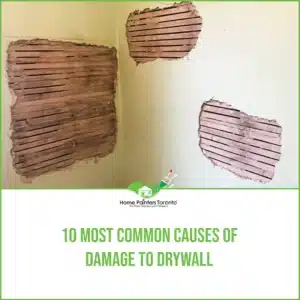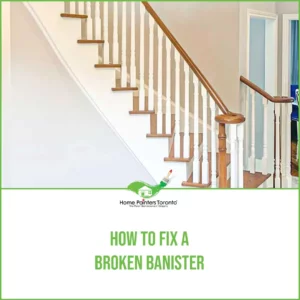
Have you ever started to walk down the stairs and grip the baluster (also known as a banister), only to find it wobbling in your hand? That’s an accident just waiting to happen, and it doesn’t do anyone any good to have a broken or loose baluster in their home. Repairing broken banisters is not nearly as hard as you might think and doesn’t always require you to replace them. For the most part, the damage isn’t caused by anything major happening; it simply becomes loose due to daily use. As soon as you find out that your baluster requires repair, you need to address it immediately, as it presents a safety hazard to both you and anyone else living in your home.
Overview of a Banister's Function and Importance
Banisters have a dual role in any property, contributing to both its safety and its aesthetic appeal.
- Safety: The primary role of a banister is to provide safety when ascending or descending stairs. Especially for young children, older people, or anyone with mobility issues, a banister is a crucial aid that can prevent falls and accidents.
- Design: Beyond safety, banisters contribute heavily to a home’s interior design. They can create a grand entrance, add character to a minimalist home, or bring warmth to contemporary decor with traditional wood designs.
A loose or broken banister not only compromises safety and aesthetics but can also decrease the overall value of your property.
Understanding the Common Causes of Banister Damage
Identifying the root cause of your banister’s damage can help prevent further issues. Here are some common causes:
- Regular Use: Over time, frequent use can lead to general wear and tear. This may result in loose fittings and weakened structures.
- Excessive Force: Applying too much weight or force to the banister can cause immediate damage. This could happen due to an accident, roughhousing, or using the banister for support when it was not designed to bear a large amount of weight.
- Poor Installation: If the initial installation was done incorrectly, the banister might not hold up to daily use. It might start to detach from the wall, or the wood could begin to split.
- Environmental Factors: Sometimes, external factors such as humidity or pests can cause damage. Changes in humidity can make the wood contract and expand, leading to weakened structures or cracks.
Key Steps in Banister Diagnosis
Inspect your banister regularly to detect any developing issues. Here’s how to diagnose a faulty banister:
- Identify Loose Sections: Take hold of the banister and try moving it. If there are any loose sections, you should be able to feel movement or hear a slight creaking noise.
- Visual Inspection: Examine the banister for visible damage such as cracks, chips, or breakages.
- Look for Environmental Damage: Check for signs of rot or pest infestation, especially if your banister is made of wood. Stains or discoloured sections might also indicate water damage.
- Check Connections: Ensure the banister is securely fastened to the wall and floor. Inspect the wall brackets and the base to identify any detachments.
Remember, an accurate diagnosis of the problem is the key to effective repair and prevention of future damage.
How to Repair a Loose or Broken Banister/Baluster at Home
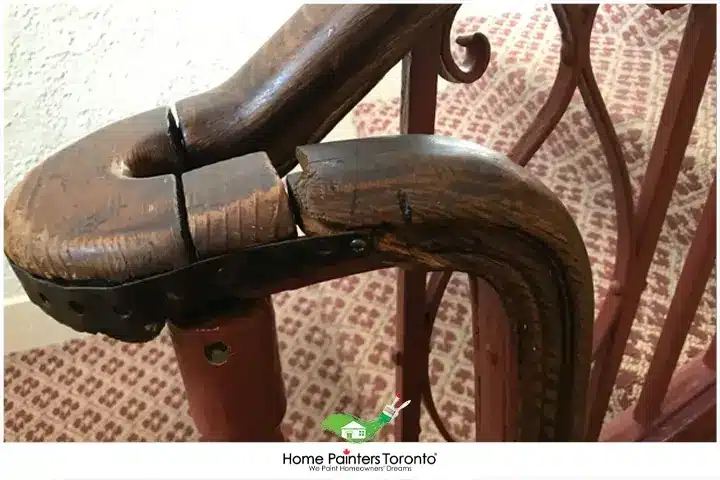
Things You Will Need:
They’re also known as banisters, in case you were slightly confused.
- Tape Measure
- Wood Glue
- Saw
- Drill and Drill Bits
- Matching Stair Trim
- Putty Knife
- Replacement Banister
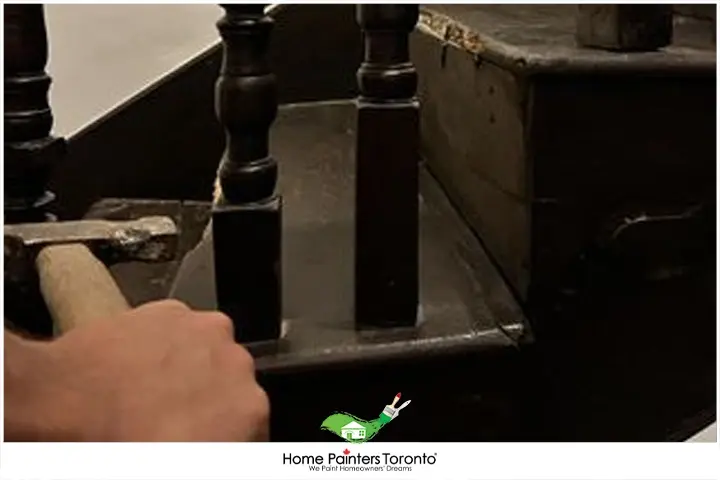
1. Remove the Loose Baluster
- Start by cutting off the broken or loose baluster.
- Wooden banisters are glued on, so twisting it free should help it come off more easily.
- Take it apart where the dowel ends using your drill if it’s proving difficult to remove.
- Scrape off the old dried glue in the stair tread with a putty knife, as well as the glue on the underside of the baluster.
2. Replace Your Loose Banister
- Don’t let safety hazards exist in your home! If you haven’t already painted or stained the replacement banister, then now is a good time to do so. Once it has fully dried, you can go ahead and replace it.
- Using your drill, drill centers at the top end and the bottom end of the baluster.
- Fill the holes with wood glue.
- Put the replacement banister in place with an end that fits securely to the stair tread and to the hole on the underside of the banister.
- Let it sit and dry, and you have successfully replaced a broken or loose banister!
When Should You Call a Professional?
While some minor repairs might be manageable at home with the right tools and materials, other situations may require professional intervention. Here are some circumstances when contacting a specialist is recommended:
- Major Structural Damage: If there is extensive damage affecting the majority of the banister or if the entire structure is loose, professional repair or replacement might be necessary.
- Beyond Basic DIY: If the repairs need advanced carpentry skills beyond a basic DIY level, it’s more effective and safer to call in a professional.
- Persistent Issues: If you’ve already tried to fix the banister, but the issues persist or reoccur, a professional can help identify underlying problems that may not be obvious.
- Safety Concerns: If you’re ever unsure about repairing yourself because of safety concerns, bring in a professional. For instance, if your staircase is tall or the banister is high, it could be dangerous to attempt to fix it yourself without the right equipment and experience.
- Matching Original Design: If you live in an older home where the banister design is intricate or made of rare materials, a professional can ensure the restoration aligns with the original aesthetic.
Before and After Photos of Banister Repair
To Sum Up
Repairing a loose or broken banister is an important aspect of maintaining both the safety and aesthetics of your home. By following the tips and guidelines outlined in this blog, you can easily tackle minor banister issues by yourself. However, always remember to weigh your DIY skills against the complexity of the problem and consider calling a professional when needed.
If you are interested in finding a reliable carpentry shop to handle banister repairs or need professional advice, try searching for “carpentry shop near me” or “baluster repair near me” online. You can find local professionals with the expertise to restore your banister to its original state, ensuring a safe and visually appealing staircase.
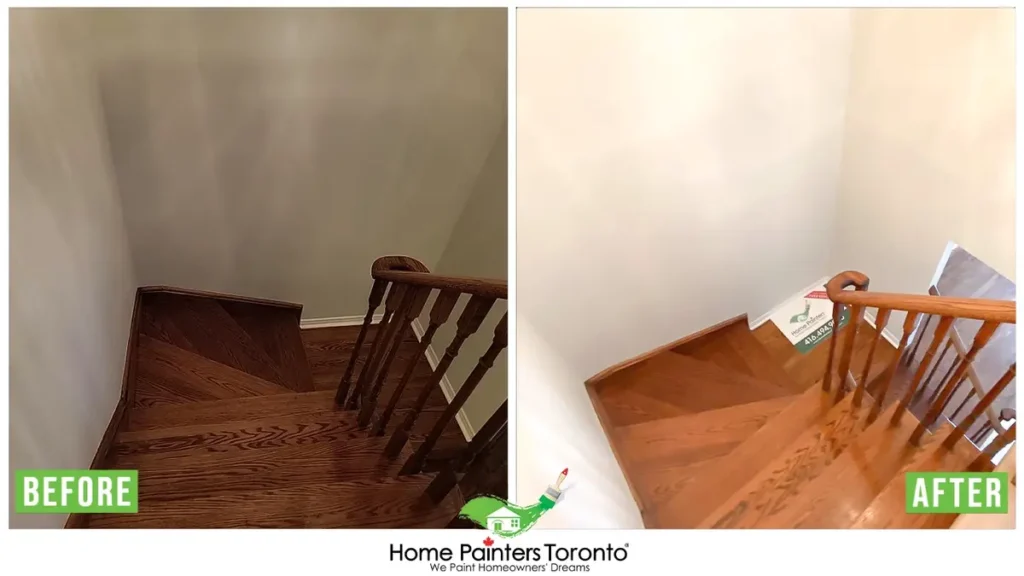
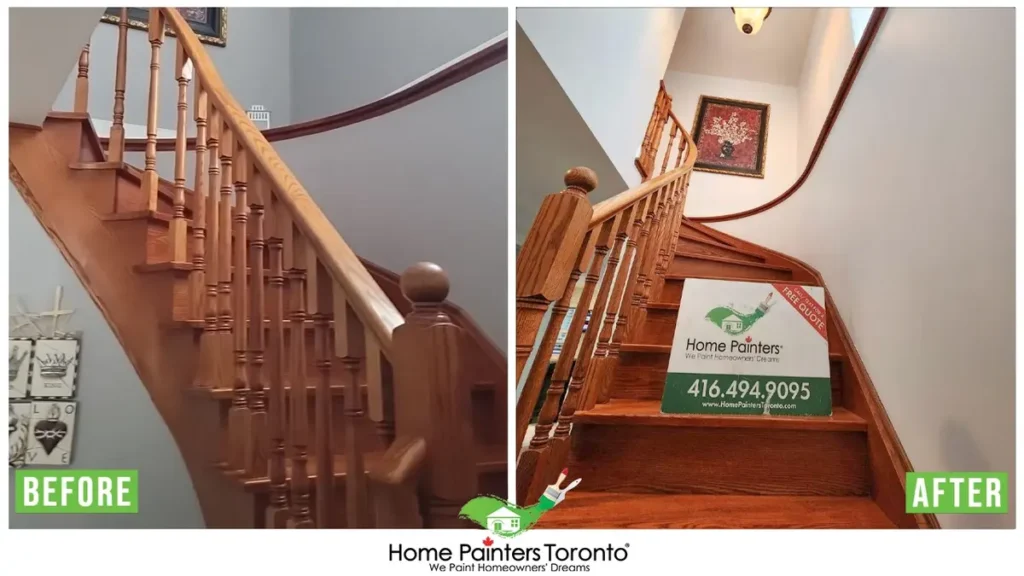
More Interesting Blogs Related to
“HOW TO REPAIR A LOOSE OR BROKEN BANISTER (BALUSTER)”
Repairing a loose baluster (broken banister) is not very hard to do yourself, but if you are in need of some help Home Painters Toronto can provide it! Give us a call today at 416-494-9095 or email [email protected]. And don’t forget to follow us on all our social channels below!


